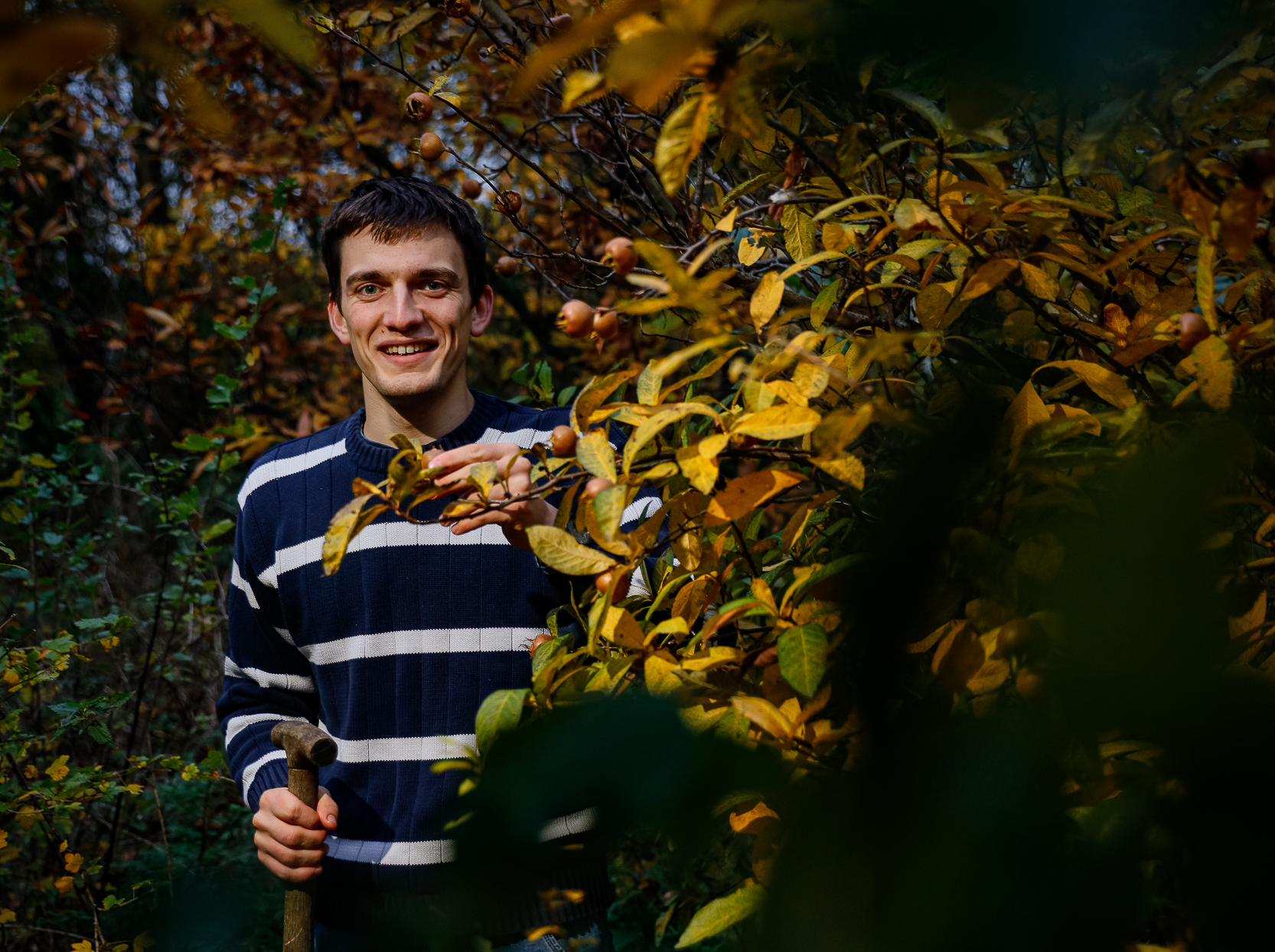Bachelor’s student Rémi Feraut grew up on his father’s farm at the foot of the Pyrenees in the South of France. ‘The farm has been in the family for several generations. Organic polyculture, which means several different crops as well as sheep for meat and for wool. And a campsite.’
It was on the campsite in the summer of 2016 that he met a girl from Nijmegen. ‘Tuomi came to work running campsite activities. It was love at first sight. After the summer she was going to study in Scotland for a year. I had just had a disappointing first year at the agricultural college in Toulouse. So I gave up my course there, planned a gap year and followed her to Scotland.’
Barista
While his girlfriend Tuomi was at university in the Scottish city of Dumfries, Feraut got a job as barista and barkeeper. After a year they moved to Nijmegen together and in September 2017, Feraut started his BSc in Plant Sciences in Wageningen. ‘I was already planning to go to Wageningen after doing my first degree in Toulouse. Thanks to Tuomi, I have come here a bit sooner.
Feraut soon felt at home in the Netherlands. It helped that he already spoke the language. ‘My mother is Dutch and when my parents separated in 2005, I lived with her in Haarlem for a year. In that year I learned to speak and write Dutch. I could already speak it. My fellow students often think I’m Dutch – until I start speaking English. Then they suddenly hear my French accent.’
Onion soup flavour
In his first year, Feraut had to do a short internship for the Orientation Plant Sciences course. ‘There was a list of internship places you could choose from. I already had experience in conventional farming, so I wasn’t particularly interested in that. Then I saw Groesbeek Food Forest on that list. I thought: food forest? I’d never hear of that. I thought it would be interesting so I phoned the owner and asked if I could spend a couple of days there.’
That was agreed, and not long after that Feraut cycled from Nijmegen to Ketelbroek Food Forest in Groesbeek, where owner Wouter van Eck showed him around. ‘I saw a sort of primitive wood with trees of different sizes, shrubs and smaller plants. There were Japanese walnuts, Asian pears, apples, chestnuts, Szechuan pepper and a load of things I’d never tasted before. Wouter gave me a Chinese cedar leaf to taste. I’d never heard of it. You put it in your mouth and it turns out it tastes like French onion soup. Amazing.’
Ecosystem
Just like the summer of 2016, it was love at first sight again for Feraut. ‘The idea is that you can get food from the forest without having to spray it or do a lot of mechanical cultivation. You make a plan for the forest, then you plant it, and almost all you have to do after that is to harvest. You are aiming to create an ecosystem that keeps itself going, with the different components helping and reinforcing each other. In a food forest there’s a role for everything, even stinging nettles. In conventional farming, nettles are seen as weeds, but they attract ladybirds and ladybirds eat aphids. So indirectly, nettles protect other plants. Butterflies like them too, and butterflies are important for pollinating plants. And of course, you can also make nettle soup and tea.’
Maybe WUR will do research on my food forest later – I’d like that
A food forest can survive diseases and plagues without huge losses, adds Feraut with enthusiasm. ‘Imagine there’s a disease that affects a certain plant. In a monoculture, you lose your whole harvest, but in a food forest you have a lot of other species that you can eat. What is more, a food forest is climate-proof. You can see that on aerial photos of Groesbeek food forest. Around the forest are a lot of monoculture fields. When there is heavy rain or a long period of drought, those fields turn pale on the aerial photos. But the food forest stays green.’
The first tree
Feraut soon began to toy with the idea of planting a food forest on his father’s land. There was just one problem, though: money. ‘To plants one hectare of forest, you need between 10,000 and 30,000 euros’ worth of plant material.’ So he put his plan on the back burner. Until one day in 2019, when he got an email from his French bank, Crédit Agricole Pyrénées Gascogne. ‘They had a small fund for investing in sustainable projects by young people. I thought, this is my chance.’ Feraut created a dossier, and got selected to present his plan to bankers from the regional bank. At the end of August, he got the green light. ‘They rang me up and said they were giving me 10,000 euros to plant a food forest in the South of France.’
The first tree will be planted on his father’s estate on 23 November. ‘You don’t get a forest straightaway of course; that will take years. But I strongly believe in this form of agriculture. It is sustainable and good for biodiversity. Maybe WUR will do research on my food forest later. I’d like that.’

 Photo Eric Scholten
Photo Eric Scholten